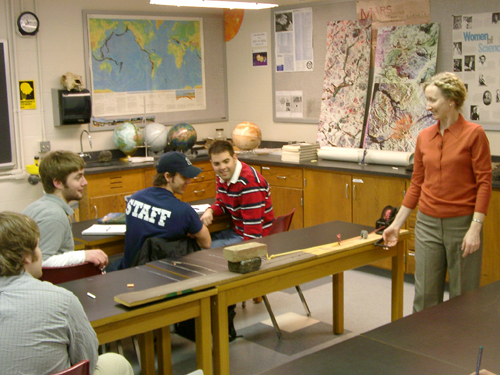Tesla's electro-mechanical oscillator or
earthquake machine is a steam-powered mechanical oscillator invented by
Nikola Tesla
in 1898. The machine which Tesla tested was small, around seven inches
(178 mm) long, and weighing one or two pounds; something "you could put
in your overcoat pocket". It was reported that in 1898 Tesla's New York
lab was nearly shaken to pieces by this little device, operated by five
pounds of air
pressure acting against a special
pneumatic piston device.
Houston Street lab
Tesla established a laboratory on Houston Street in New York at 46 E.
There, at one point while experimenting with mechanical oscillators, he
allegedly generated a resonance of several buildings causing complaints
to the police. As the speed grew it is said that the machine oscillated
at the resonance frequency of his own building and, belatedly realizing
the danger, he was forced to use a sledge hammer to terminate the
experiment, just as the police arrived.
[1]
Principle of operation
Tesla's oscillator is purely mechanical. Steam was forced into the
oscillator, and exited through a series of ports, the net effect of
which was to cause the armature to vibrate at high speed, within its
casing. The casing was necessarily very strong, as temperatures due to
pressure heating in the upper chamber exceeded 200 degrees, and the
pressure reached 400psi. Other versions of the machine were created,
designed to produce electrical power, both direct and alternating
(without the need for rectifiers). Another variation used electromagnets
to control the frequency of the piston's oscillation.
References
- ^ Prodigal Genius, John J. O'Neill, pp. 162–164










No comments:
Post a Comment